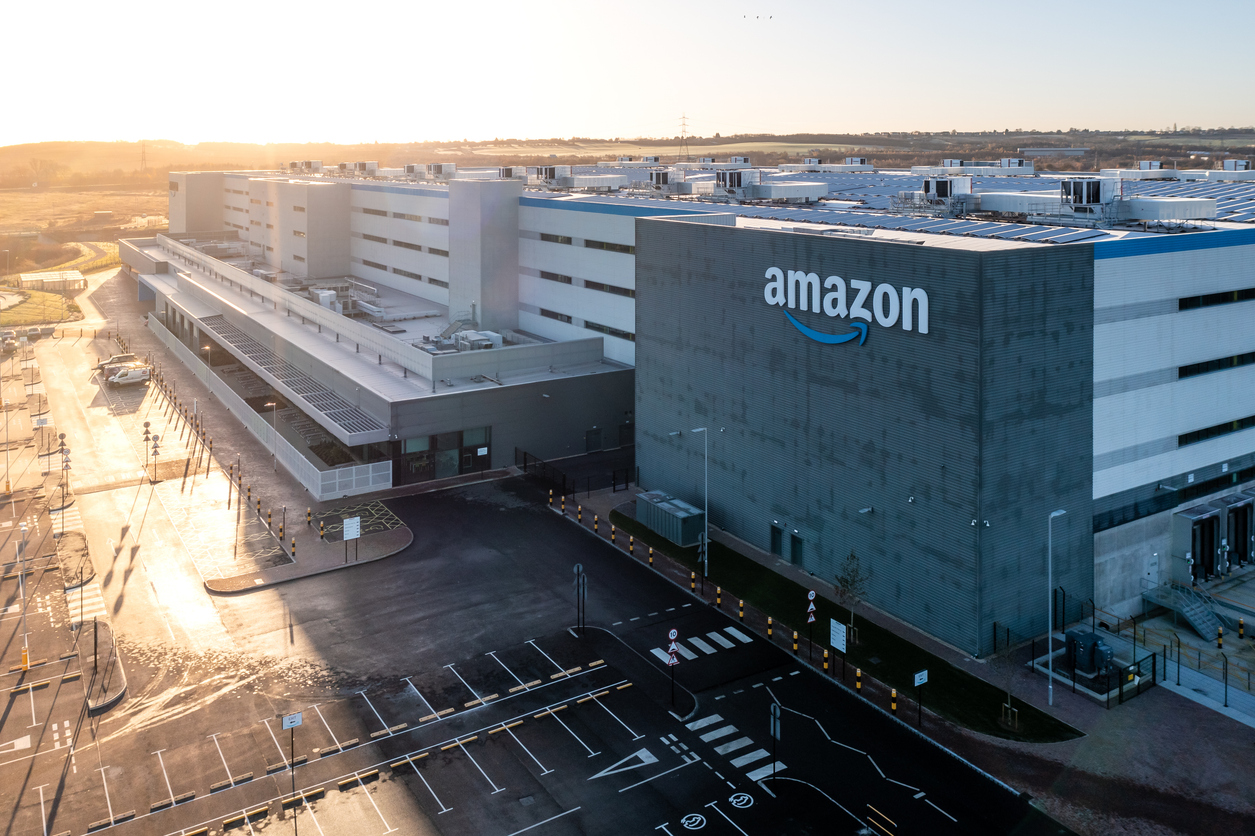The relentless hum of conveyor belts and the silent glide of autonomous robots are the sounds of modern commerce, a system perfected within Amazon's global fulfillment empire. The promise of rapid delivery has redefined consumer expectations and established a new benchmark for operational excellence.
For leaders across every industry, Amazon's logistics network is a masterclass in scale, technology, and efficiency. Yet beneath this marvel of innovation lies a growing chorus of concern regarding its most critical component: its people.
As reports of high injury rates, intense working conditions, and labor unrest mount, a critical question emerges for the C-suite: At what point does the pursuit of extreme efficiency begin to yield diminishing returns, or even become counterproductive?
Engineering Unprecedented Speed: Technology and Logistics
At the core of Amazon's market dominance is an operational strategy that merges human labor with cutting-edge technology on an unprecedented scale. This system is a powerful case study for business leaders in achieving velocity and precision. The company's ability to orchestrate millions of moving parts—from robotic arms to delivery vans—is a testament to meticulous engineering and data-driven management.
This infrastructure is not merely supportive of the business; it is the engine of its growth, continuously optimized to shrink the time between a customer's click and a package's arrival. Understanding the mechanics of this system offers profound lessons in competitive advantage through operational superiority.
The Rise of the Robots and Automated Systems
Automation is the central nervous system of Amazon's fulfillment centers. The company is aggressively pursuing a new robotic workforce, deploying various autonomous robots to streamline operations and reduce repetitive human movement. For example, systems like Proteus, a fully autonomous mobile robot, are designed to transport heavy carts across facilities, reducing the physical strain on workers. Furthermore, the company has leveraged sophisticated technology to create new workflows that were previously impossible. The impact of this investment is most visible during peak demand; robotics has enabled certain facilities to manage a significant surge in order volume, a feat that would paralyze less advanced operations.
Data, Monitoring, and Performance Metrics
The second pillar of Amazon's efficiency is its pervasive use of data and digital monitoring to track, measure, and manage workforce productivity. Every action within a fulfillment center can be converted into a data point, allowing for real-time performance analysis against stringent targets. This system, known as 'The System,' is documented in various reports and sets rigid productivity quotas. While this yields extraordinary logistical control, it has also become a source of significant contention. Workers have reported that the constant digital oversight creates immense psychological pressure, contributing to a stressful work environment.
This presents a classic dilemma for management: the same automation tools that drive world-class efficiency can also foster burnout and lead to high employee turnover, a persistent operational challenge the company has worked to address.
When the System Breaks Down: Workplace Dangers and Human Toll
The transition from viewing Amazon as a technological marvel to understanding its human impact requires a shift in focus from the machinery to the people who operate alongside it. While the system is designed for hyper-efficiency, recent reports suggest this design may contribute to an alarming rate of workplace incidents.
The immense pressure to meet delivery promises, especially during peak periods, creates conditions where safety can become secondary to speed. This section serves as a cautionary tale for corporate leaders, illustrating how operational pressures can manifest as direct physical harm to employees, creating significant ethical and financial liabilities.
A Pattern of High Injury Rates
A troubling correlation has emerged between Amazon's high-demand operations and a high rate of worker injuries. A comprehensive report from the Strategic Organizing Center (SOC), a coalition of American labor unions, found that Amazon's warehouse workers suffered serious injuries at a rate significantly higher than the industry average.
The report found that in 2024, the serious injury rate at Amazon warehouses was 5.9 per 100 workers, nearly double that of non-Amazon warehouses (3.0 per 100). The same report noted that serious injuries peaked during the holiday season, with a 52 percent increase during Cyber Monday, 2024, compared to the beginning of the holiday shopping period.
Further complicating the narrative, in late 2024, the U.S. Department of Labor announced a corporate-wide settlement with Amazon, requiring the company to implement systemic ergonomic improvements across hundreds of its facilities. This underscored the government's finding that Amazon's work processes were designed for speed, not safety, leading to serious musculoskeletal injuries.
The Grueling Environment: Heat, Stress, and Retaliation
Beyond acute injuries, the day-to-day working environment has become a significant point of contention. Heat in warehouses during summer months has been a documented concern, with workers in San Bernardino, California, filing a complaint with Cal/OSHA during extreme temperatures in 2024, leading to citations for the lack of adequate water and shade.
In addition to physical hardships, there are deeply concerning accounts of a toxic culture in some facilities. This is echoed by a late 2024 U.S. Senate report expressing serious concerns that Amazon may have retaliated against a worker who engaged in protected conduct.
Furthermore, a lawsuit filed in late 2024 in a U.S. federal court alleges a "systemic pattern of insurmountable discrimination" based on race and gender within Amazon's corporate ranks, indicating that these are not isolated incidents but potential symptoms of deeper managerial and cultural challenges.
Balancing the Books: Safety Investments vs. Systemic Flaws
In response to mounting criticism, Amazon has publicly committed to improving workplace safety. However, closer observation reveals a complex reality where corporate initiatives clash with the on-the-ground experiences of its workforce. For any CEO, this section is critical, as it frames the debate in terms of risk management. The story of Amazon's labor practices is increasingly becoming a case study in reputational, legal, and operational risk, demonstrating how unresolved internal issues can generate significant external pressures that affect profitability and brand value.
The Public-Facing Commitment to Safety
Amazon has not been silent on the issue of worker safety. The company frequently points to its significant financial commitments and continues to report its safety performance on its company site. This strategy includes deploying new technology, such as advanced camera systems in its delivery vans, designed to monitor distracted driving and enhance road safety for its drivers. These public-facing measures are intended to reassure investors and the public that the company is proactively addressing its safety record.
The Legal Gauntlet for Injured Workers
Despite corporate safety initiatives, many employees who suffer injuries describe a bureaucratic nightmare when they attempt to seek recourse. Insurers, incentivized to minimize payouts, often deny claims on technicalities, thrusting injured workers into a complex and arduous appeals process.
Unions and Workers' Compensation Lawyers: a Growing Necessity
For an employee already dealing with physical pain and lost wages, navigating this system without expert guidance is nearly impossible, leaving them without pay or medical coverage when they are most vulnerable. When facing a corporate giant, injured employees often require a specialized workers compensation lawyer to secure the benefits they are legally entitled to.
This adversarial environment is a key factor driving the increasing organization of workers through powerful unions fighting for safer conditions and collective bargaining rights.
The Price of Speed: How Efficiency Creates Risk
Amazon's relentless pursuit of efficiency has created significant enterprise-level risks beyond individual legal disputes. These risks fall into three categories: reputational, legal, and operational. Negative press surrounding worker deaths, union battles, and unsafe working conditions erodes public trust and brand loyalty. At the same time, increased scrutiny from regulatory bodies like OSHA and the National Labor Relations Board can lead to substantial fines and mandated operational overhauls. Furthermore, high employee turnover and labor disruptions directly impact the supply chain, increasing hiring and training costs and destabilizing operations.
For any C-suite leader, the Amazon narrative is a critical lesson in the unsustainability of aggressive growth that neglects the human element. Building a resilient, future-proof enterprise requires a leadership approach that transcends short-term productivity metrics. It necessitates a shift in perspective, viewing employees not as a variable cost but as a core strategic asset. A workforce subjected to poor conditions leads to high turnover and the loss of valuable institutional knowledge, creating an inherently fragile operation vulnerable to internal and external shocks.
Leaders must adopt actionable strategies focused on the human factor to achieve sustainable growth. This includes integrating safety into core performance indicators for executives and managers, investing in proactive ergonomic solutions to prevent injuries, and establishing transparent, third-party-managed feedback channels for workers to report concerns without fear of retaliation. Companies should also engage independent auditors for unbiased assessments of workplace conditions and champion a culture where leaders are rewarded for achieving efficiency through employee well-being, not at its expense.
A Future Built on People, Not Just Packages
The Amazon model has undeniably set a new global standard for logistical prowess. However, the narrative emerging from its warehouse floors is a critical case study for every business leader. When untethered from a fundamental commitment to human welfare, the relentless pursuit of efficiency creates profound and costly risks that extend far beyond the factory floor.
The true challenge for the leaders of tomorrow is not simply to build faster, more automated systems, but to construct resilient, ethical, and sustainable enterprises. The long-term winners will be those who understand that the most valuable asset in any operation cannot be scanned, sorted, or shipped—it must be cultivated.














